Jianfeng Shi
OPE-SR: Orthogonal Position Encoding for Designing a Parameter-free Upsampling Module in Arbitrary-scale Image Super-Resolution
Mar 02, 2023



Abstract:Implicit neural representation (INR) is a popular approach for arbitrary-scale image super-resolution (SR), as a key component of INR, position encoding improves its representation ability. Motivated by position encoding, we propose orthogonal position encoding (OPE) - an extension of position encoding - and an OPE-Upscale module to replace the INR-based upsampling module for arbitrary-scale image super-resolution. Same as INR, our OPE-Upscale Module takes 2D coordinates and latent code as inputs; however it does not require training parameters. This parameter-free feature allows the OPE-Upscale Module to directly perform linear combination operations to reconstruct an image in a continuous manner, achieving an arbitrary-scale image reconstruction. As a concise SR framework, our method has high computing efficiency and consumes less memory comparing to the state-of-the-art (SOTA), which has been confirmed by extensive experiments and evaluations. In addition, our method has comparable results with SOTA in arbitrary scale image super-resolution. Last but not the least, we show that OPE corresponds to a set of orthogonal basis, justifying our design principle.
Energy Efficient Reconfigurable Intelligent Surface Enabled Mobile Edge Computing Networks with NOMA
Apr 30, 2021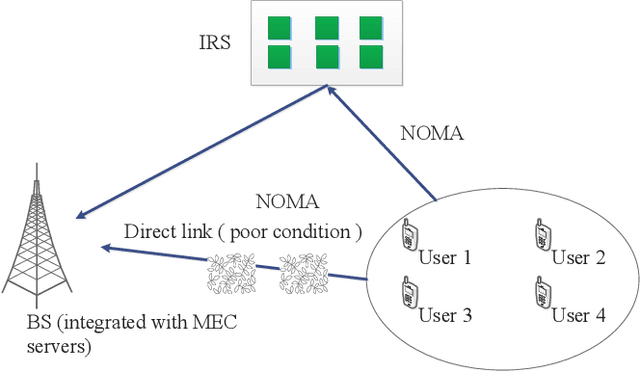
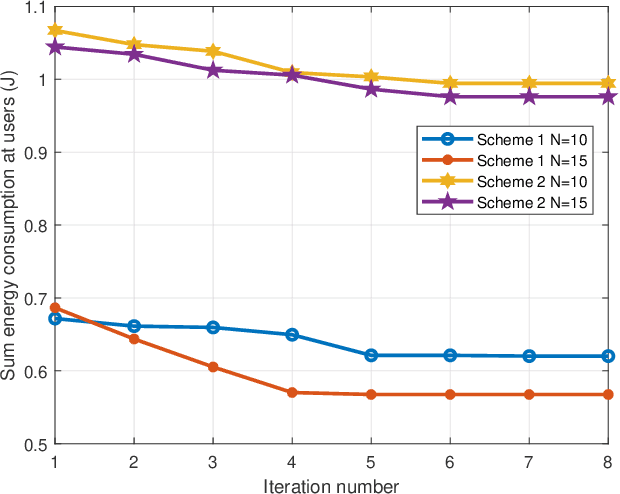
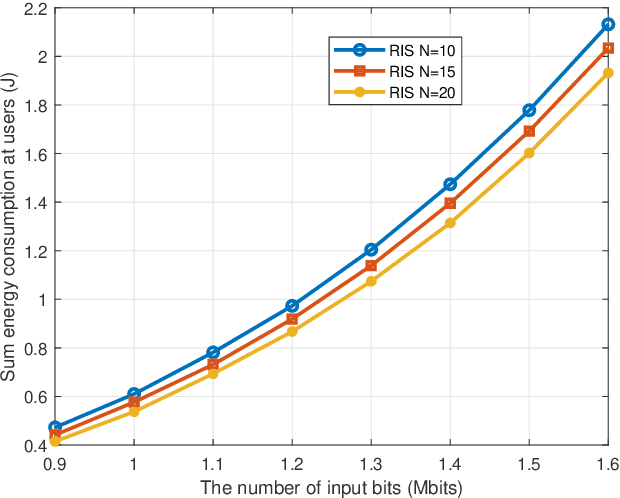
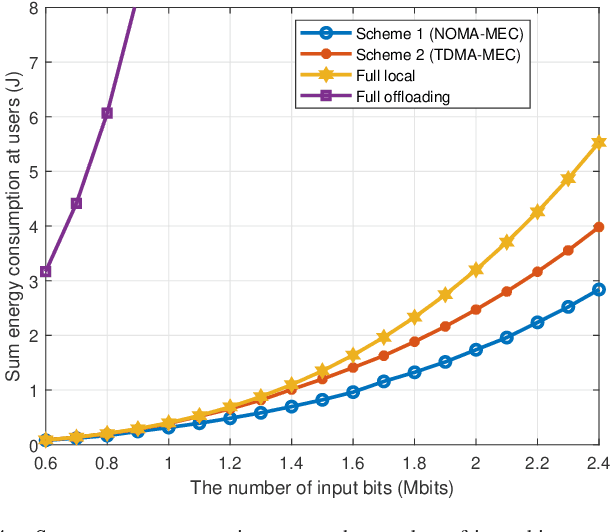
Abstract:Reconfigurable intelligent surface (RIS) has emerged as a promising technology for achieving high spectrum and energy efficiency in future wireless communication networks. In this paper, we investigate an RIS-aided single-cell multi-user mobile edge computing (MEC) system where an RIS is deployed to support the communication between a base station (BS) equipped with MEC servers and multiple single-antenna users. To utilize the scarce frequency resource efficiently, we assume that users communicate with BS based on a non-orthogonal multiple access (NOMA) protocol. Each user has a computation task which can be computed locally or partially/fully offloaded to the BS. We aim to minimize the sum energy consumption of all users by jointly optimizing the passive phase shifters, the size of transmission data, transmission rate, power control, transmission time and the decoding order. Since the resulting problem is non-convex, we use the block coordinate descent method to alternately optimize two separated subproblems. More specifically, we use the dual method to tackle a subproblem with given phase shift and obtain the closed-form solution; and then we utilize penalty method to solve another subproblem for given power control. Moreover, in order to demonstrate the effectiveness of our proposed algorithm, we propose three benchmark schemes: the time-division multiple access (TDMA)-MEC scheme, the full local computing scheme and the full offloading scheme. We use an alternating 1-D search method and the dual method that can solve the TDMA-based transmission problem well. Numerical results demonstrate that the proposed scheme can increase the energy efficiency and achieve significant performance gains over the three benchmark schemes.
Channel Assignment in Uplink Wireless Communication using Machine Learning Approach
Jan 12, 2020
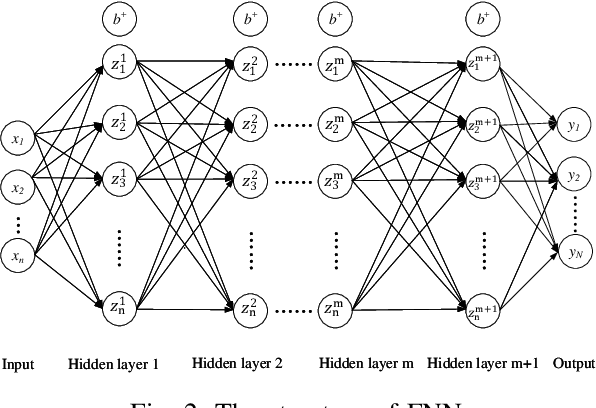

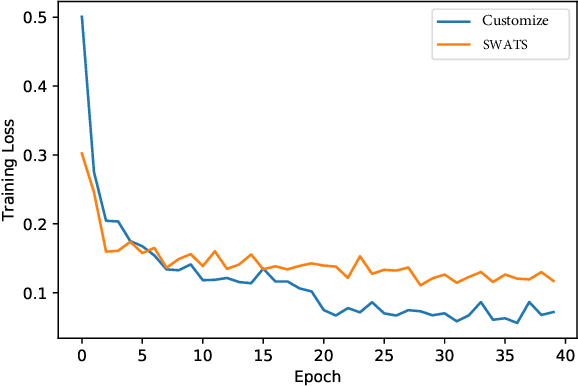
Abstract:This letter investigates a channel assignment problem in uplink wireless communication systems. Our goal is to maximize the sum rate of all users subject to integer channel assignment constraints. A convex optimization based algorithm is provided to obtain the optimal channel assignment, where the closed-form solution is obtained in each step. Due to high computational complexity in the convex optimization based algorithm, machine learning approaches are employed to obtain computational efficient solutions. More specifically, the data are generated by using convex optimization based algorithm and the original problem is converted to a regression problem which is addressed by the integration of convolutional neural networks (CNNs), feed-forward neural networks (FNNs), random forest and gated recurrent unit networks (GRUs). The results demonstrate that the machine learning method largely reduces the computation time with slightly compromising of prediction accuracy.
 Add to Chrome
Add to Chrome Add to Firefox
Add to Firefox Add to Edge
Add to Edge